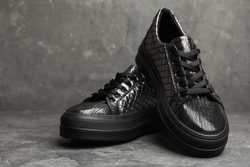- Category: Hiking
- Insulation: Yes
- Weight: 15.7 oz
- Waterproof: Yes
- Temperature Range: Not listed
- Material: Upper: Cordura / Midsole: Techlite EVA / Outsole: Omni-Grip Rubber
- Price on publish: $130
Best Winter Boots for Men: Keep Out the Cold in Style

Our evaluations and opinions are not influenced by our advertising relationships, but we may earn a commission from our partners’ links. This content is created by TIME Stamped, under TIME’s direction and produced in accordance with TIME’s editorial guidelines and overseen by TIME’s editorial staff. Learn more about it.
If you’ve already done your homework and figured out the best winter jackets and coats for men, it’s time to make sure you’ve got your feet covered, too. Whatever you’re stepping on—frigid ground, snowy city streets, rugged hiking trails–we’ve got a pick for you. Take a stroll through our list of the best winter boots for men and find the perfect pair.
Quality winter boots always come with a high price tag, unfortunately—the combination of materials and craftsmanship required to make a reliably warm and waterproof boot just can’t be done on the cheap. At the less expensive end of that quality field, though, sits the always-reliable Columbia's offering, as recommended by Loiseau. “The Columbia Men's Fairbanks Omni-Heat Boots offer tremendous insulation, traction, and quality craftsmanship at an extremely cost-effective price point,” he enthuses.
A more affordable but still reliably sturdy, waterproof winter boot.

“For hiking in the winter specifically, I recommend the Vectiv Fastpack Insulated Futurelight Boots from The North Face,” says LaGrone. “For hiking, the sole grip on the bottom of the shoe is a top priority. These boots feature a 3D TPU plate under the forefoot for multi-directional stability, plus a rocker and high-rebound midsole, which creates a curved shape, ideal for long stretches of movement. The rubber outsole is waterproof and durable, and the 4mm lugs provide ideal traction on the trails.”
Durable winter boots with seriously grippy tread for hiking the wintriest of trails.
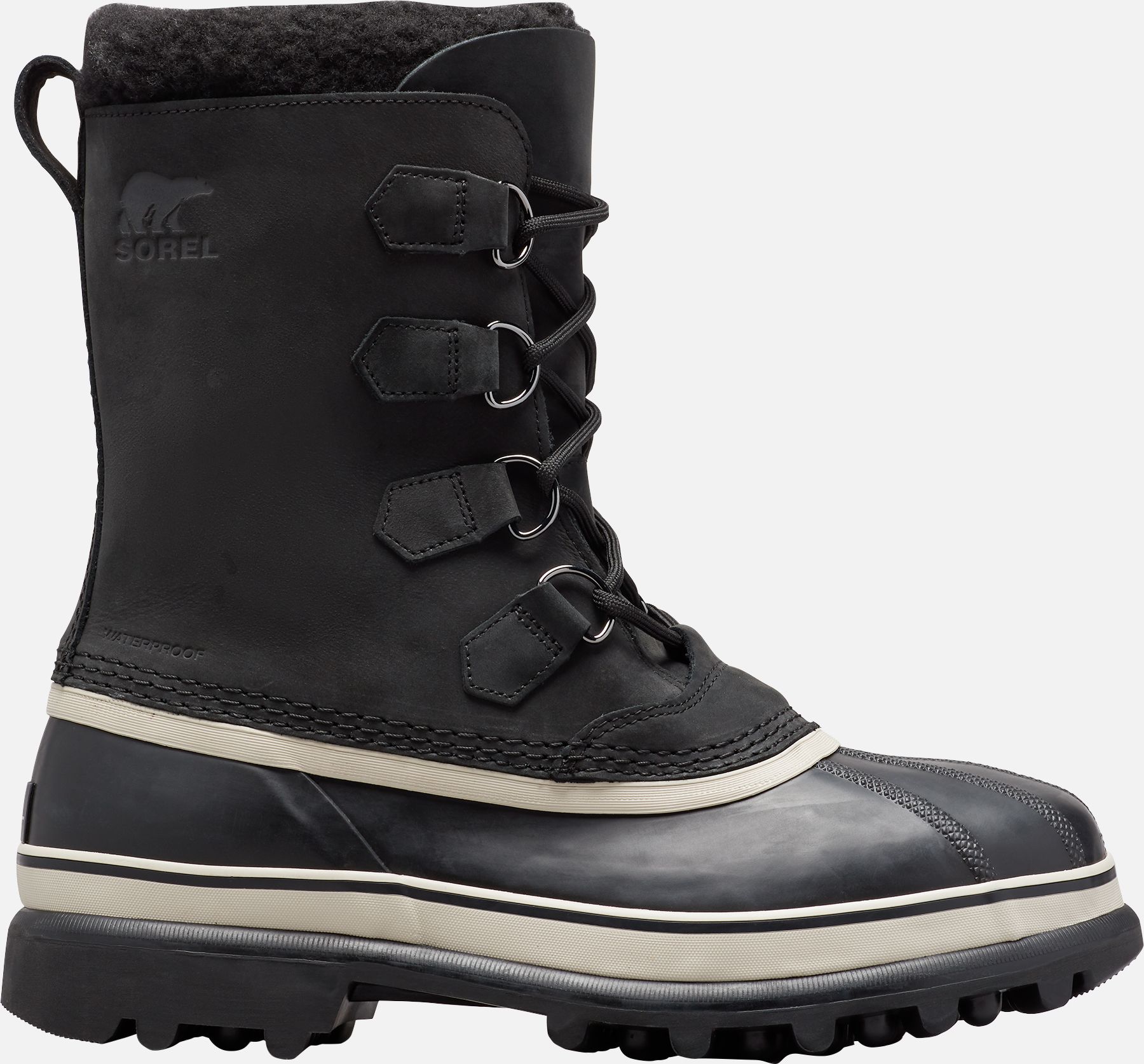
You’d think that winter boots being good in the snow would be a given, but as we’ll discuss later in this article, some aren’t even waterproof. You don’t need to worry about that with Sorel’s Caribou boots, though, as they’re designed to keep out the wet while keeping in the warm. Loiseau praises their traction, too, which is vital for staying upright on snowy, slippery sidewalks.
A good-looking, reliable winter boot, perfect for snowy days out and about.
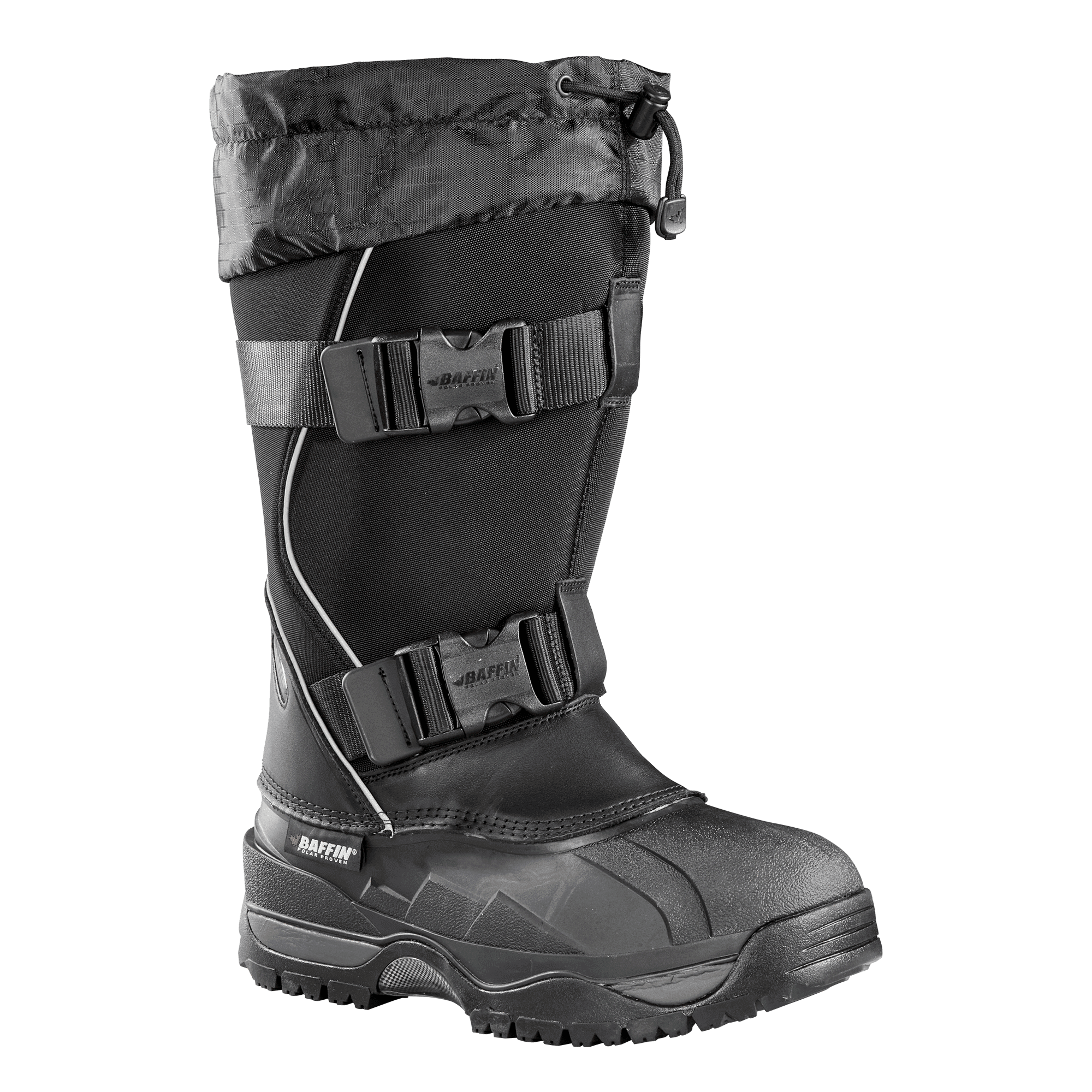
“This boot is designed and constructed for the coldest climates,” says LaGrone. “Key features include a comprehensive inner boot system, B-Tek dry waterproof base, a nylon locking snow collar to protect from the elements, and a Polar Rubber outsole for maximized grip and longevity at cold temperatures. The inner boot system also has removable layers, so you can adjust the insulation for more moderate temperatures. It’s a pricier option, but the quality construction makes it a boot that’s built to last.”
A hardcore boot for hardcore weather, these will keep your feet safe in even the most extreme cold.

If nothing on our list of the best Chelsea boots for men fits your winter style, consider giving this one a try. “When the Classic Chelsea boot by Red Wing first came out in the 1990s, the style was praised by ranchers for their ability to quickly slip them on for late-night livestock emergencies,” says Patrick Burch, co-owner of Cave + Post Trading Co. men’s boutique. “While you may not be rushing off to birth calves in the middle of the night, it’s never a bad idea to have a pair of boots that are easy to slip on or kick off, especially in soggy winter weather.”
An attractive, convenient winter boot, albeit not one designed for traipsing through snow.

If you love the idea of a winter Chelsea boot, but balk at the idea of one that doesn’t fully protect against the elements, try this one instead. “The Men's Revel IV Chelsea by Keen is an excellent everyday winter boot,” says LaGrone. “Being a Chelsea boot, they have the classic elastic ankle and tab, allowing you to easily slip into them, and they stay secure once on. The boot itself is waterproof yet breathable, with the upper made from full-grain leather. Additionally, the bottom has 5mm lugs for traction, making them easy to walk in for a variety of conditions.”
A weatherproof Chelsea boot option to keep things quick and easy when leaving the house on wet or snowy days.
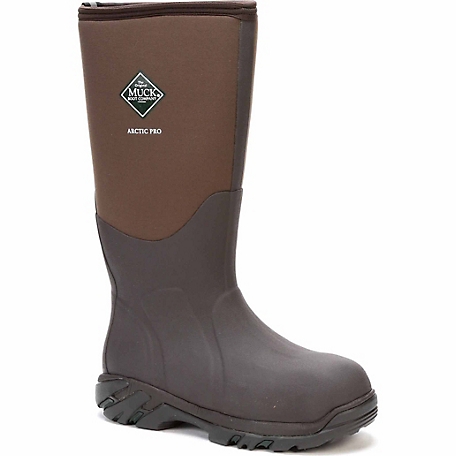
If ankle-length or even mid-calf won’t cut it, take a look at these full length boots from Muck Boot. Fleece-lined and 100% waterproof, with 2mm of thermal foam underfoot for additional warmth, they’re also tough as hell, featuring both steel toecaps and a steel plate puncture-resistant midsole, as well as an electric shock-resistant outsole. Capable of withstanding temps as low as -60℉, these are some seriously capable winter boots.
An incredibly tough and warm boot, for those who need protection from cold, wet, and a lot more besides.
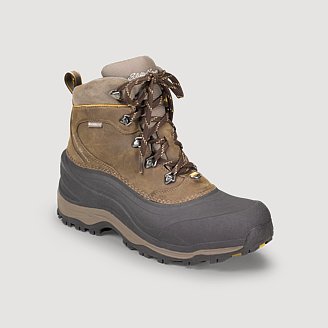
Good traction is one thing, but for those of us with unreliable ankles or high arches, a little more support is required, which is why LaGrone recommends the Snowfoil from Eddie Bauer. “This boot features a waterproof TPR shell and 200-gram ThermaFill insulation,” he says. “The sole provides arch support and has external treads for gripping packed snow. Many reviewers cite comfort and durability, making the boots suitable for everyday walking and hiking.”
A warm and waterproof winter boot for those who need a little extra support.

“If you want a dual-purpose boot that can be worn for work or play, I recommend the Red Wing Work Chukka,” says Burch. “Packing light is so much easier when you keep the packed footwear to a minimum, and these boots are perfect in the office or out on the street. As a bonus, they’re extremely comfortable, which is another plus if you like to explore new cities on foot.”
A stylish but functional boot that works just as well indoors as out.

Not all winter boots have to be super heavy or clunky—Hunter has found the right balance of style and function here with their Commando Waterproof Chelsea boot. “These boots are waterproof and lightweight!” says Loiseau. “They stretch, have a grip sole, and are perfect for a rainy day.” They also look cool as hell, which is certainly a bonus.
A stylish, sturdy, waterproof boot for looking cool in the cold.
Our picks were made through a process of careful consultation with our expert sources, combined with personal experience and a thorough combing of customer reviews, to ensure that the majority of buyers are happy with their boots.
Winter boots can get pricey, so you want to be sure you’re getting your money’s worth. “Establish a budget and select boots that offer maximum value within that budget,” advises Dimitry Loiseau, founder and chief editor of REGARD magazine. “For optimal foot warmth during winter months, seek boots with adequate insulation that will keep your feet warm. Slip-resistant soles will improve snow and ice traction for greater safety, and for optimal foot support, ensure a proper fitting shoe, especially if you have wide feet or high arches.”
“In almost all winter climates, your primary concern is going to be whether or not your boots are waterproof,” points out Roger LaGrone, founder of Alexander Noel. “Determining this comes down to investigating the materials and the construction of the sole to ensure water, snow, and slush will not leak through. The trick is finding a balance between breathable and waterproof materials, as even in the winter, the feet can get hot when wearing boots for a long period of time.”
“Keep an eye out for stitching quality as well as seam quality, which can affect durability and how long your boots will last,” says Loiseau. Since maintenance plays a big part in how long a pair of boots holds together, he also recommends figuring out how easily cleaning and maintenance can be performed, as well as where you’re going to keep them off-season so they stay in good shape.
“Clean winter boots by gently brushing away dirt and debris before wiping them with a damp cloth, then allow them to air dry without any direct heat sources,” advises Loiseau. “Do not put them in the washing machine or dryer.” You can follow the same advice for cleaning your best trail running shoes.
Obviously, the whole point of winter boots is that it’s okay to get them wet, but when it comes time to put them back in the closet, you need to dry them off. “Taking the extra time to wipe off snow and salt will help prevent wear and tear on the boots over time,” says LaGrone. “This is especially important for boots made of delicate leather–for leather boots specifically, I recommend applying a wax polish protectant before the start of the snowy season to protect the material and make the boots easier to clean. A raised shoe rack may also be beneficial for helping the water on the soles evaporate, so the shoes do not end up soaking in a puddle overnight.”
“When it comes time for storage, I recommend putting a mold on the inside to maintain shape,” says Loiseau. “Keep them in a cool, dry location away from direct sunlight.”
LaGrone explains that rubber boots are already extremely durable, so extra treatment isn’t necessary, but that leather boots will benefit from a wax or conditioner treatment before giving them their first taste of winter.
In terms of insulation, “The insulation of the boot is best kept by wearing proper socks and ensuring the interior is properly dried anytime it gets wet,” says LaGrone. “Also, lace up your boots properly to prevent snow and rain from getting inside.” Loiseau adds that you want to dry them out thoroughly after use to protect them against mold and mildew growth.
“Select moisture-wicking, insulating socks from materials like merino wool, or synthetic blends that wick away sweat quickly while offering adequate insulation, to prevent discomfort or blisters from setting in,” advises Loiseau. “When trying on boots, make sure you wear the socks you’ll be wearing with the boots, to make sure you’re getting the correct sizing and like the fit.”
“Winter boots certainly can be suitable for hiking, if they have adequate grip on the soles,” says LaGrone. “Look for ridges and teeth on the sole that will be able to grip packed snow and ice and prevent slips.” Loiseau adds that you should opt for a pair with ankle support, too.
“Not all winter boots are waterproof,” warns LaGrone. “Some sleeker winter boot options are designed with aesthetics as the priority and may not have adequate insulation for wet and snowy conditions.”
“Synthetic winter boots tend to be lightweight, quick-drying, more affordable, and vegan-friendly,” says Loiseau. “Leather winter boots provide more durable protection from the elements, as well as more breathability than their synthetic counterparts.” LaGrone adds that neither are considered completely waterproof on their own, and will need a water-repellent finish treatment applied to the material to protect it before putting them on.
The information presented here is created by TIME Stamped and overseen by TIME editorial staff. To learn more, see our About Us page.



